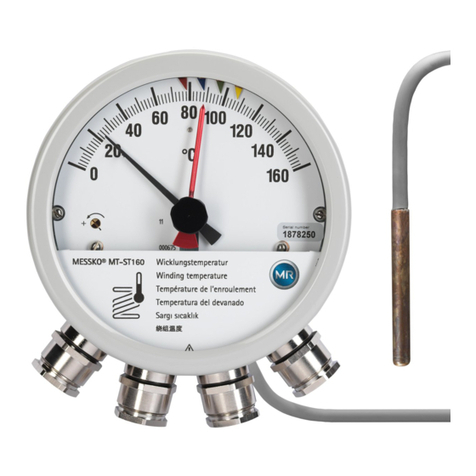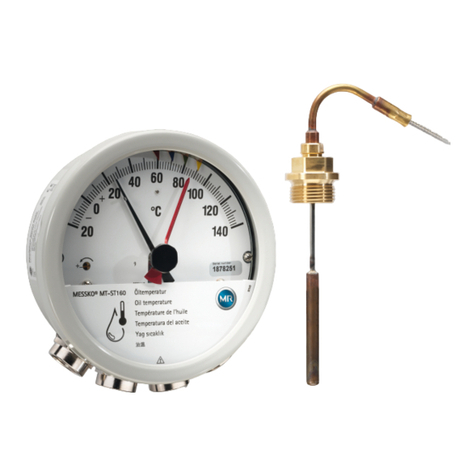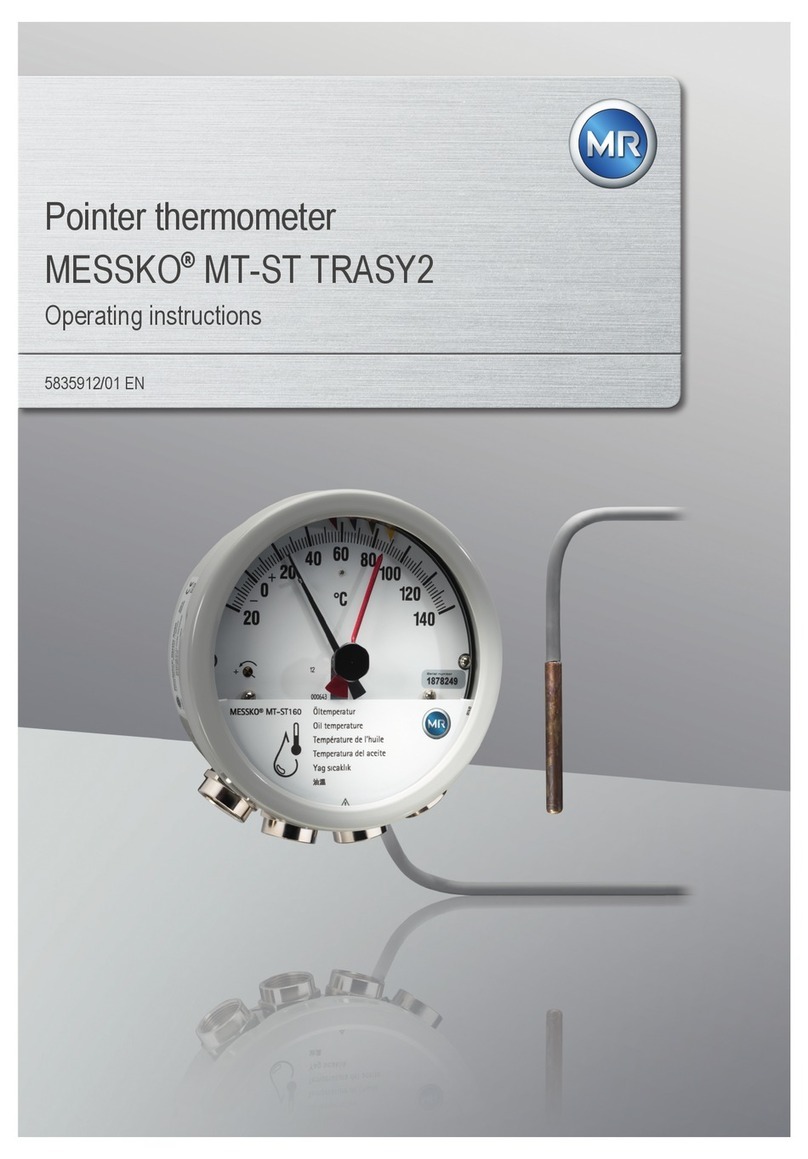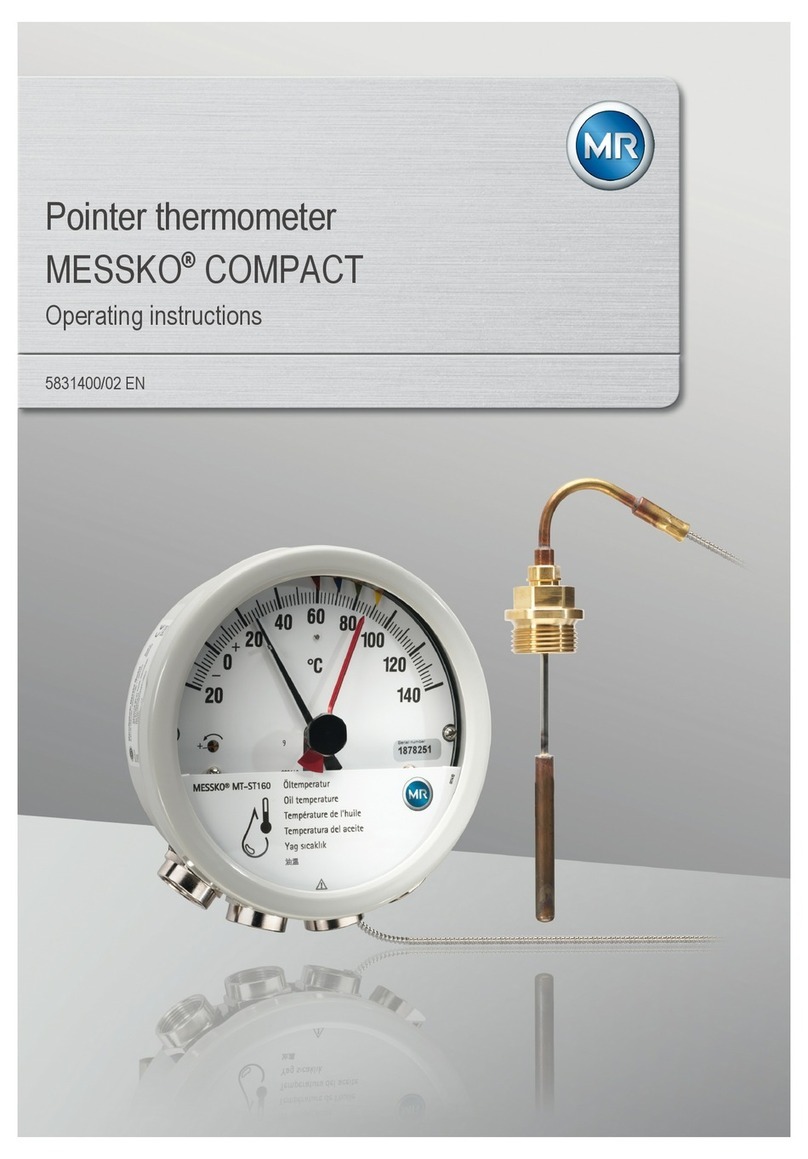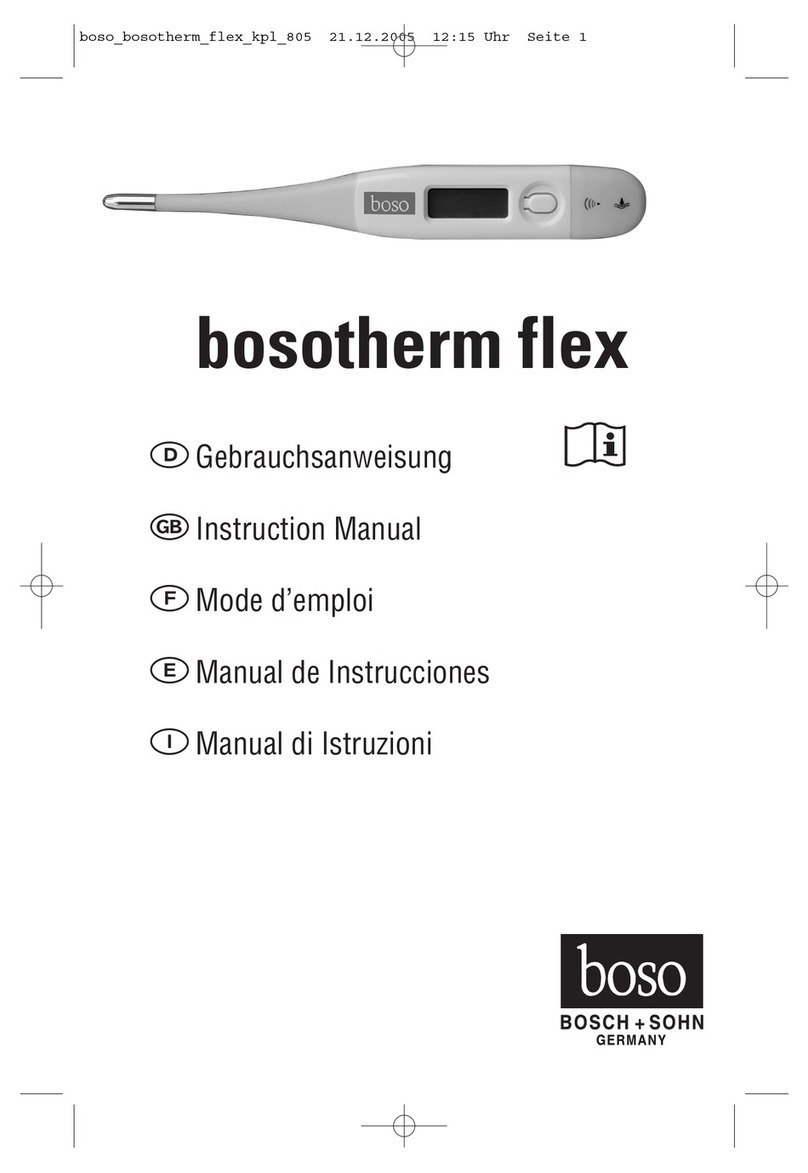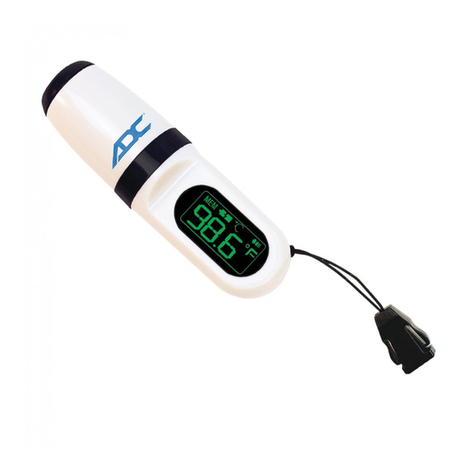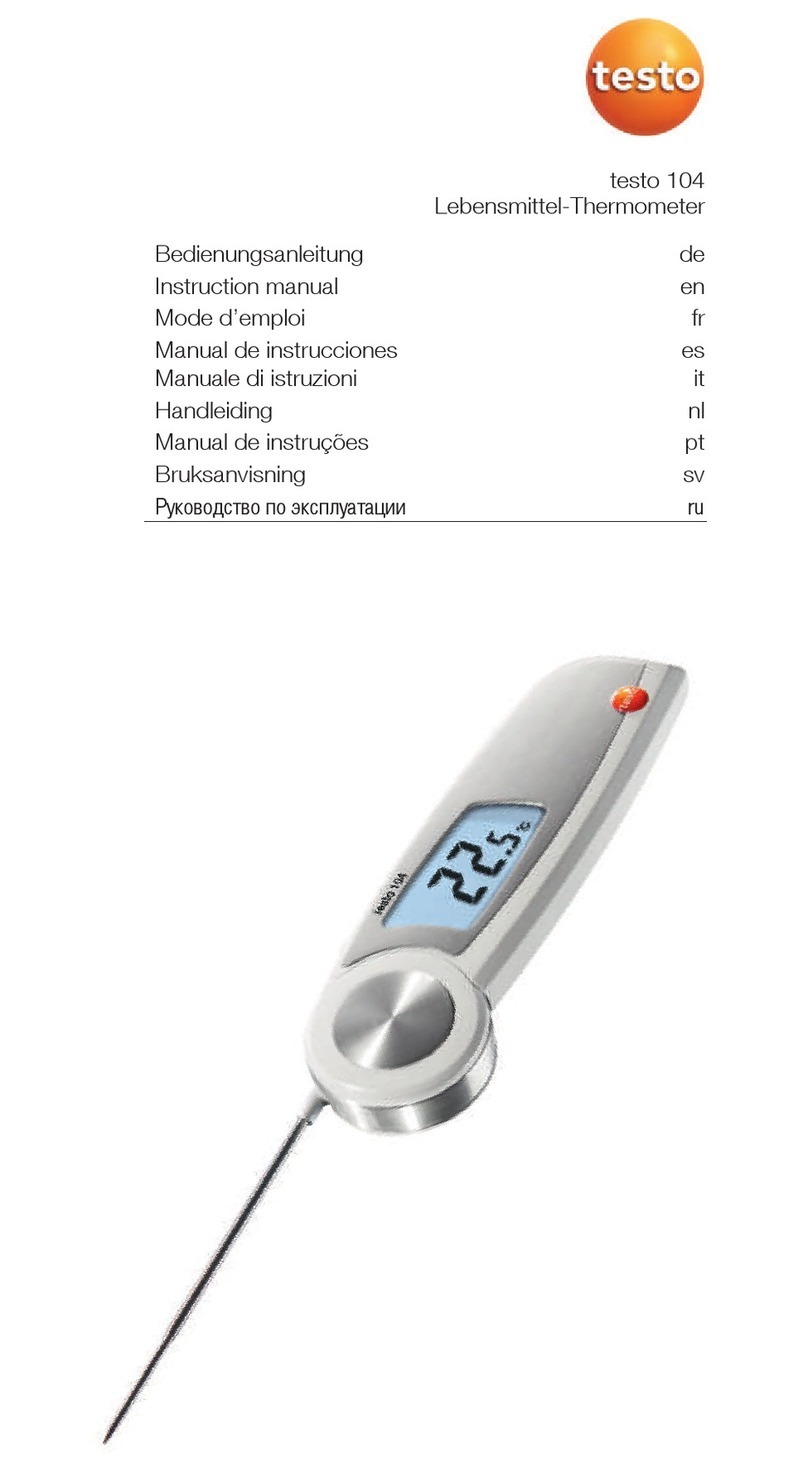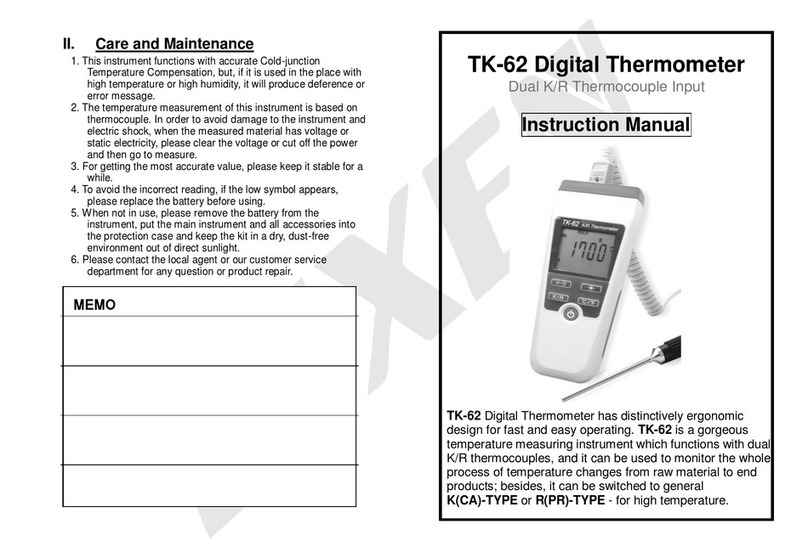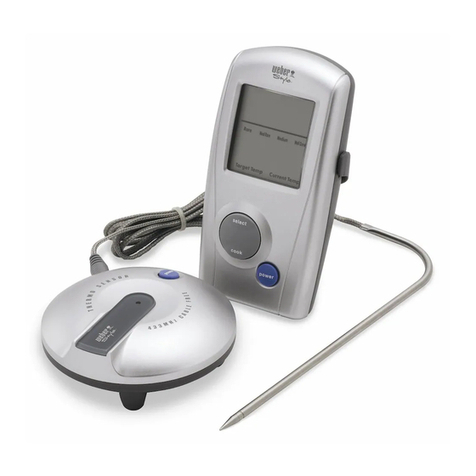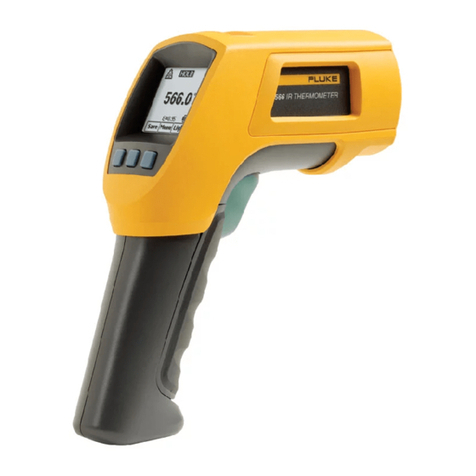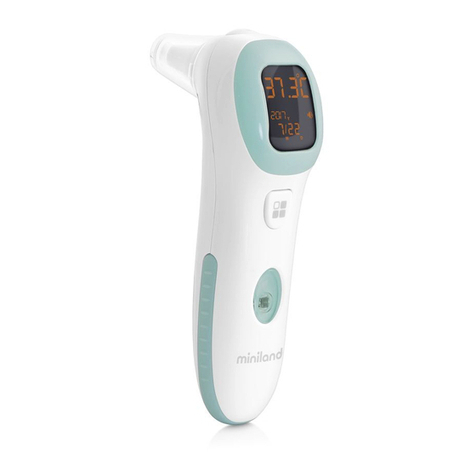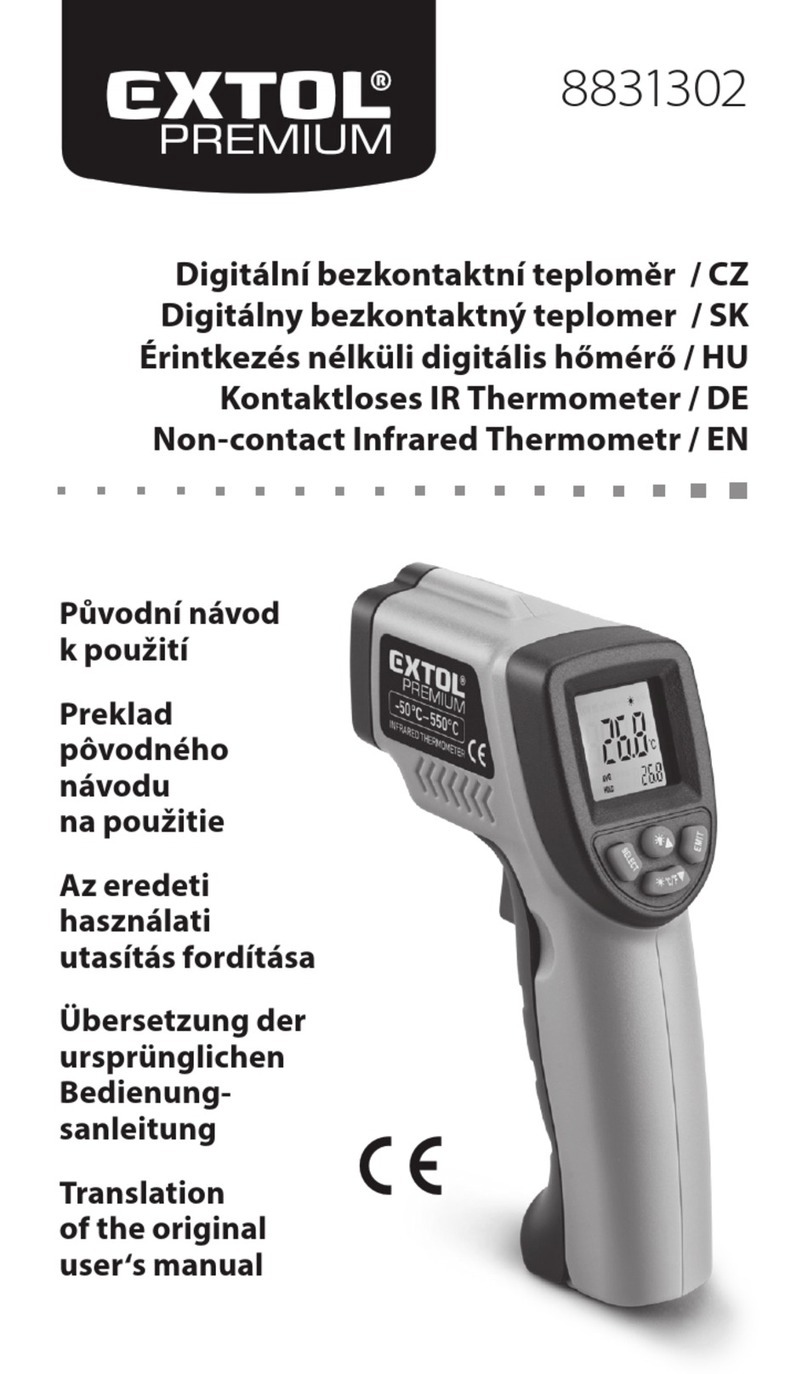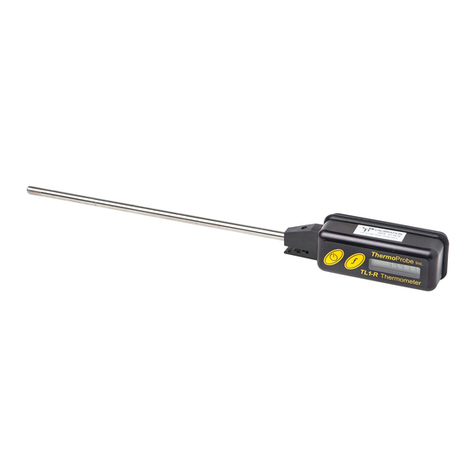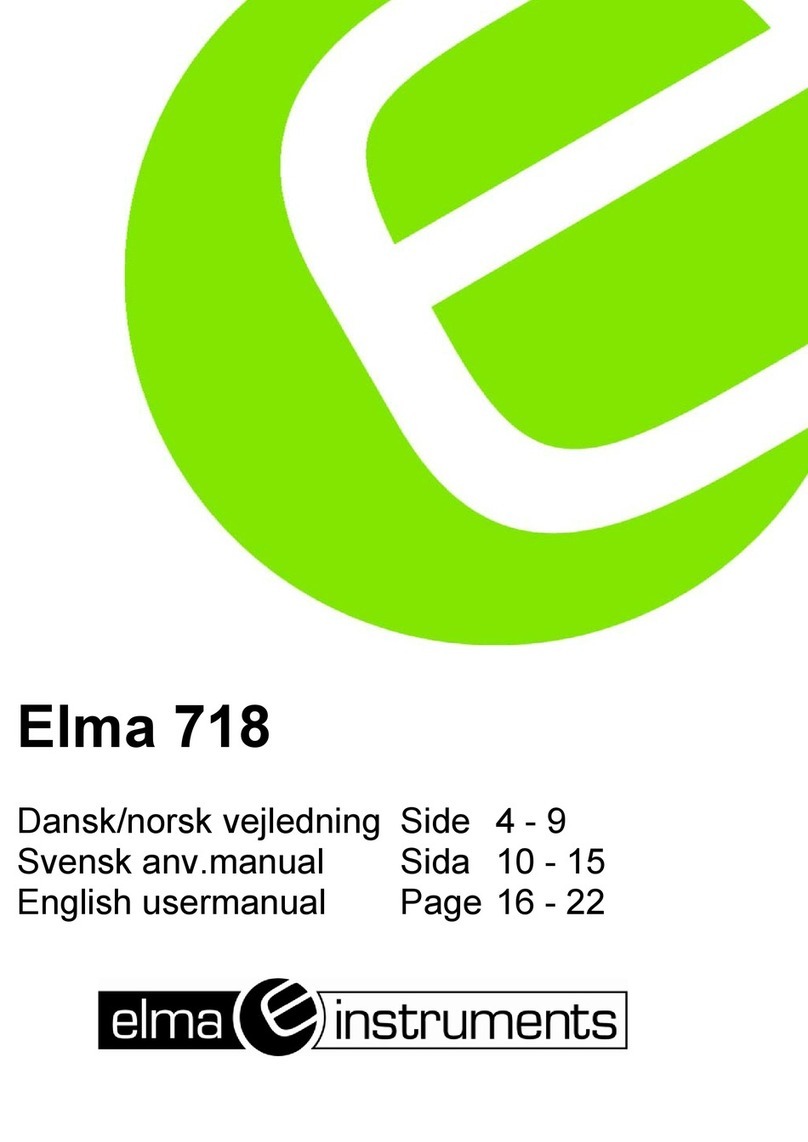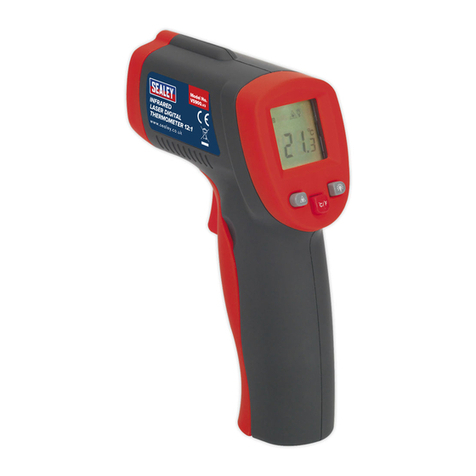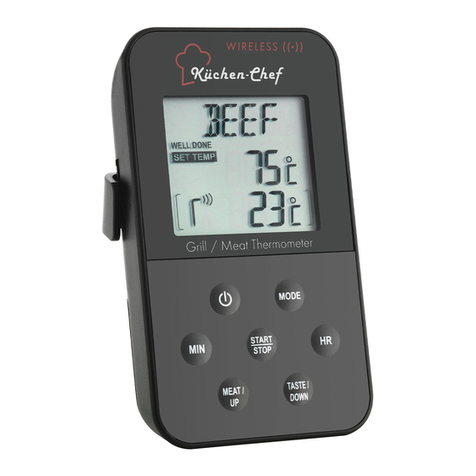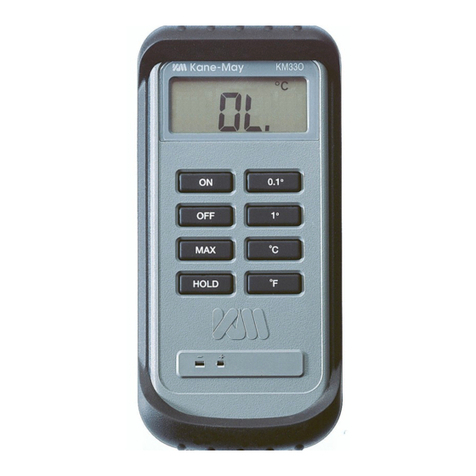MR MESSKO BeTech User manual

Operating instructions
MESSKO® BETECH®. Pointer thermometer
9181336/00 EN
THE POWER BEHIND POWER.

© All rights reserved by Maschinenfabrik Reinhausen
Dissemination and reproduction of this document and use and disclosure of
its content are strictly prohibited unless expressly permitted.
Infringements will result in liability for compensation. All rights reserved in
the event of the granting of patents, utility models or designs.
The product may have been altered since this document was published.
We reserve the right to change the technical data, design and scope of
supply.
Generally the information provided and agreements made when processing
the individual quotations and orders are binding.
The product is delivered in accordance with MR's technical specifications,
which are based on information provided by the customer. The customer has
a duty of care to ensure the compatibility of the specified product with the
customer's planned scope of application.
The original operating instructions were written in German.

9181336/00 EN Table of contents 3
Table of contents
1 Introduction ................................................................... 6
1.1 Manufacturer ...........................................................................................6
1.2 Completeness .........................................................................................6
1.3 Safekeeping .............................................................................................6
1.4 Notation conventions.............................................................................7
1.4.1 Hazard communication system.............................................................7
1.4.2 Information system.................................................................................8
1.4.3 Instruction system ..................................................................................8
1.4.4 Typographic conventions.......................................................................9
2 Security........................................................................ 10
2.1 Appropriate use.....................................................................................10
2.2 Fundamental Safety Instructions ........................................................ 11
2.3 Personnel qualification ......................................................................... 13
2.4 Personal protective equipment ...........................................................14
3 Product description.......................................................15
3.1 Scope of delivery ................................................................................... 15
3.2 Function description .............................................................................15
3.3 Design .................................................................................................... 17
3.3.1 Pointer thermometer............................................................................ 17
3.3.2 Temperature sensor .............................................................................19
3.4 Versions .................................................................................................19
3.4.1 TT version (optional)............................................................................. 21
3.4.2 Pt100 version (optional) .......................................................................22
3.5 Nameplate .............................................................................................23
4 Packaging, transport and storage ................................24
4.1 Purpose ................................................................................................. 24
4.2 Suitability, structure and production.................................................. 24
4.3 Markings.................................................................................................25
4.4 Transportation, receipt and handling of shipments ..........................25
4.5 Storage of shipments ...........................................................................27
4.6 Further transport...................................................................................27

4 Table of contents 9181336/00 EN
5 Installation and commissioning ................................... 28
5.1 Transporting in the installed state...................................................... 29
5.2 Checking measured temperature values........................................... 29
5.3 Mounting the pointer thermometer.................................................... 31
5.3.1 Attaching the pointer thermometer to the transformer................... 31
5.3.2 Securing the capillary line.................................................................... 34
5.3.3 Inserting the temperature sensor........................................................35
5.4 Electrical connection.............................................................................37
5.4.1 Preparation ........................................................................................... 38
5.4.2 Opening the housing............................................................................41
5.4.3 Preparing the cables .............................................................................41
5.4.4 Protective conductor connection....................................................... 49
5.4.5 Connecting the micro-switches.......................................................... 49
5.4.6 Connecting the analog sensor............................................................ 50
5.5 Setting the micro-switches ..................................................................55
5.6 Checking the micro-switches...............................................................57
5.7 Closing the housing ............................................................................. 58
5.8 Setting temperature gradients (winding temperature).................... 58
5.8.1 Gradient setting by heating current ................................................... 58
5.8.2 Setting the gradient via balancing resistor .........................................61
6 Maintenance, inspection and care................................ 63
7 Disposal .......................................................................64
7.1 SVHC information in accordance with the REACH regulation ........ 64
8 Technical data.............................................................. 65
9 Appendix...................................................................... 67
9.1 9167569................................................................................................. 68
9.2 9176753 ................................................................................................. 69
9.3 9172482................................................................................................. 70
9.4 9185052.................................................................................................. 71
9.5 9185510 ..................................................................................................72
9.6 9187251 ..................................................................................................73
9.7 9187491 ................................................................................................. 74
9.8 9190338..................................................................................................75

9181336/00 EN Table of contents 5
9.9 9191121 ...................................................................................................76
9.10 9192789..................................................................................................77
9.11 9198872..................................................................................................78
9.12 9198947 .................................................................................................79
9.13 10098840.............................................................................................. 80
Glossary ....................................................................... 81

6 Introduction 9181336/00 EN
1 Introduction
This technical file contains detailed descriptions on the safe and proper in-
stallation, connection, commissioning and monitoring of the product.
This technical document is intended solely for specially trained and autho-
rized personnel.
1.1 Manufacturer
Maschinenfabrik Reinhausen GmbH
Falkensteinstraße 8
93059 Regensburg
Deutschland
+49 941 4090-0
reinhausen.com
MR Reinhausen customer portal: https://portal.reinhausen.com.
Further information on the product and copies of this technical file are avail-
able from this address if required.
1.2 Completeness
This technical file is incomplete without the supporting documents:
–Order confirmation
1.3 Safekeeping
Keep this technical file and all supporting documents ready at hand and ac-
cessible for future use at all times.

9181336/00 EN Introduction 7
1.4 Notation conventions
This section contains an overview of the symbols and textual emphasis used.
1.4.1 Hazard communication system
Warnings in this technical file are displayed as follows.
1.4.1.1 Warning relating to section
Warnings relating to sections refer to entire chapters or sections, sub-sec-
tions or several paragraphs within this technical document. Warnings relating
to sections have the following format:
WARNING
Type of danger!
Source of the danger and its consequences.
Action
Action
1.4.1.2 Embedded warning information
Embedded warnings refer to a particular part within a section. These warn-
ings apply to smaller units of information than the warnings relating to sec-
tions. Embedded warnings use the following format:
DANGER! Instruction for avoiding a dangerous situation.

8 Introduction 9181336/00 EN
1.4.1.3 Signal words
Depending on the product, the following signal words are used:
Signal word Meaning
DANGER Indicates a hazardous situation which, if not avoided, will result in
death or serious injury.
WARNING Indicates a hazardous situation which, if not avoided, could result in
death or serious injury.
CAUTION Indicates a hazardous situation which, if not avoided, could result in
minor or moderate injury.
NOTICE Indicates measures to be taken to prevent damage to property.
Table1: Signal words in warning notices
1.4.2 Information system
Information is designed to simplify and improve understanding of particular
procedures. In this technical file it is laid out as follows:
Important information.
1.4.3 Instruction system
This technical file contains single-step and multi-step instructions.
Single-step instructions
Instructions which consist of only a single process step are structured as fol-
lows:
Aim of action
Requirements (optional).
1. Step 1 of 1.
Result of step (optional).
Result of action (optional).

9181336/00 EN Introduction 9
Multi-step instructions
Instructions which consist of several process steps are structured as follows:
Aim of action
Requirements (optional).
1. Step 1.
Result of step (optional).
2. Step 2.
Result of step (optional).
Result of action (optional).
1.4.4 Typographic conventions
Typographic convention Purpose Example
UPPERCASE Operating controls,
switches
ON/OFF
[Brackets] PC keyboard [Ctrl] + [Alt]
Bold Software operating controls Press Continue button
…>…>… Menu paths Parameter > Control param-
eter
Italics System messages, error
messages, signals
Function monitoring alarm
triggered
[► Number of pages] Cross reference [► Page41].
Dotted underscore
.............................................
Glossary entry, abbrevia-
tions, definitions, etc.
Glossary entry
........................
Table2: Typographic conventions used in this technical file

10 Security 9181336/00 EN
2 Security
Read this technical file through carefully to familiarize yourself with the prod-
uct. This technical file is a part of the product.
–Read and observe the safety instructions provided in this chapter in partic-
ular.
–Observe the warnings in this technical file to avoid function-related dan-
gers.
The product is manufactured based on state-of-the-art technology. Never-
theless, danger to life and limb for the user or impairment of the product and
other material assets may arise in the event of improper use.
2.1 Appropriate use
The pointer thermometer measures the temperature in power transformers,
distribution transformers, reactors, shunt reactors and similar devices.
The product is designed solely for use in stationary large-scale systems.
If used as intended and in compliance with the requirements and conditions
specified in this technical file as well as the warning notices in this technical
file and attached to the product, then the product does not present any dan-
ger to people, property or the environment. This applies throughout the ser-
vice life of the product, from delivery, installation and operation to removal
and disposal.
The following is considered intended use:
–Use the product only with the transformer specified in the order.
–Operate the product in accordance with this technical documentation, the
agreed-upon delivery conditions and the technical data.
–Ensure that all necessary work is performed by qualified personnel only.
–Use the equipment and special tools supplied solely for the intended pur-
pose and in accordance with the specifications of this technical file.
–Operate the product in electrical energy systems and facilities.

9181336/00 EN Security 11
–Only operate the product in industrial areas.
–Observe the notices in this technical document regarding electromagnetic
compatibility and the technical data.
2.2 Fundamental Safety Instructions
To prevent accidents, disruptions and damage as well as unacceptable ad-
verse effects on the environment, those responsible for transport, installa-
tion, operation, maintenance and disposal of the product or parts of the
product must ensure the following:
Personal protective equipment
Loosely worn or unsuitable clothing increases the danger of becoming
trapped or caught up in rotating parts and the danger of getting caught on
protruding parts. This results in danger to life and limb.
–All necessary devices and personal protective equipment required for the
specific task, such as a hard hat, safety footwear, etc. must be worn. Ob-
serve the "Personal protective equipment" [►Section 2.4, Page 14] sec-
tion.
–Never wear damaged personal protective equipment.
–Never wear rings, necklaces or other jewelry.
–If you have long hair, wear a hairnet.
Work area
Untidy and poorly lit work areas can lead to accidents.
–Keep the work area clean and tidy.
–Make sure that the work area is well lit.
–Observe the applicable laws for accident prevention in the relevant coun-
try.
Contamination level
Moisture, dust, sweat and other conductive dirt may cause malfunctions in
the device. To ensure contamination levelII, observe the following informa-
tion:
–Wear assembly gloves.
–Ensure that no dirt or moisture enters the device when it is open.
–Close up the device after installation.

12 Security 9181336/00 EN
Explosion protection
Highly flammable or explosive gases, vapors and dusts can cause serious ex-
plosions and fire.
–Do not install or operate the product in areas where a risk of explosion is
present.
Safety markings
Warning signs and safety information plates are safety markings on the prod-
uct. They are an important aspect of the safety concept. Safety markings are
depicted and described in the chapter "Product description".
–Observe all safety markings on the product.
–Make sure all safety markings on the product remain intact and legible.
–Replace safety markings that are damaged or missing.
Ambient conditions
To ensure reliable and safe operation, the product must only be operated un-
der the ambient conditions specified in the technical data.
–Observe the specified operating conditions and requirements for the in-
stallation location.
Modifications and conversions
Unauthorized or inappropriate changes to the product may lead to personal
injury, material damage and operational faults.
–Only modify the product after consultation with Maschinenfabrik Rein-
hausen GmbH.
Spare parts
Spare parts not approved by Maschinenfabrik Reinhausen GmbH may lead to
physical injury, damage to the product and malfunctions.
–Only use spare parts that have been approved by Maschinenfabrik Rein-
hausen GmbH.
–Contact Maschinenfabrik Reinhausen GmbH.

9181336/00 EN Security 13
Working during operation
You must only operate the product when it is in a sound operational condi-
tion. Otherwise it poses a danger to life and limb.
–Regularly check the operational reliability of safety equipment.
–Perform the inspection tasks described in this technical document regu-
larly.
2.3 Personnel qualification
The person responsible for assembly, commissioning, operation and inspec-
tion must have the following qualifications.
Electrically skilled person
The electrically skilled person has a technical qualification and therefore has
the required knowledge and experience, and is also conversant with the ap-
plicable standards and regulations. The electrically skilled person is also profi-
cient in the following:
–Can identify potential dangers independently and is able to avoid them.
–Is able to perform work on electrical systems.
–Is specially trained for the working environment in which (s)he works.
–Must satisfy the requirements of the applicable statutory regulations for
accident prevention.
Technical Service
We strongly recommend having repairs and retrofitting carried out by our
Technical Service department. This ensures that all work is performed cor-
rectly. If repair work is not carried out by our Technical Service department,
please ensure that the personnel who carry out the repairs are trained and
authorized to do so by Maschinenfabrik Reinhausen GmbH.
Maschinenfabrik Reinhausen GmbH
Technical Service
P.O. Box 12 03 60
93025 Regensburg
Germany
Phone: +49 941 4090-0

14 Security 9181336/00 EN
E-mail: [email protected]
Internet: www.reinhausen.com
2.4 Personal protective equipment
Personal protective equipment must be worn during work to minimize risks
to health.
–Always wear the personal protective equipment required for the job at
hand.
–Never wear damaged personal protective equipment.
–Observe information about personal protective equipment provided in the
work area.
Protective clothing Close-fitting work clothing with a low tearing strength,
with tight sleeves and with no protruding parts. It mainly
serves to protect the wearer against being caught by mov-
ing machine parts.
Safety shoes To protect against falling heavy objects and slipping on
slippery surfaces.
Safety glasses To protect the eyes from flying parts and splashing liquids.
Visor To protect the face from flying parts and splashing liquids
or other dangerous substances.
Hard hat To protect against falling and flying parts and materials.
Hearing protection To protect against hearing damage.
Protective gloves To protect against mechanical, thermal and electrical haz-
ards.
Table3: Personal protective equipment

9181336/00 EN Product description 15
3 Product description
3.1 Scope of delivery
The product is packaged with protection against moisture and is delivered as
follows:
–Pointer thermometer with temperature sensor
–Mounting brackets
–Technical documents
Optional:
–TT version: Connection via 4...20mA and/or 0...5VDC analog output; fur-
ther options on request
–Pt100 version: Connection via Pt 100 analog output
–Cable gland up to 3x M20x1.5; 1x M16 for analog output; standard, WADI or
offshore
–1/2″ NPT adapters
–PG16 adapters
Please note the following:
–Check the shipment against the shipping documents for completeness
–Store the parts in a dry place until installation
–The product must remain in the packaging and may only be removed im-
mediately before installation
3.2 Function description
The pointer thermometer measures the oil temperature or determines the
winding temperature in power transformers, distribution transformers or re-
actors, depending on the version. The sensor of the pointer thermometer is
located in the thermometer pocket mounted in the transformer tank. The
measured value is displayed directly on the pointer thermometer or, as an
option, on an analog or digital display using a signal converter.

16 Product description 9181336/00 EN
Depending on the device type, the electrical temperature signal can be trans-
mitted as follows:
–TT version: Connection via 4...20mA and/or 0...5VDC analog output
–Pt100 version: Connection via Pt 100 analog output
Figure1: Example of temperature measurement and temperature display
1 Transformer 2 Pointer thermometer for winding
temperature
3 Digital signal converter 4 Transformer fan
5 SCADA 6 Digital display/analog display
7 Analog signal converter 8 Pointer thermometer for oil temper-
ature

9181336/00 EN Product description 17
3.3 Design
3.3.1 Pointer thermometer
Figure2: Pointer thermometer
1 Pressure equalization element 2 Temperature sensor
3 Capillary line with stainless steel
protective tube
4 4 cover bolts
5 Housing cover 6 Switching point scale
7 Switching point configuration 8 Pointer
9 Drag hands

18 Product description 9181336/00 EN
Figure3: Mounting brackets
1 Mounting brackets

9181336/00 EN Product description 19
3.3.2 Temperature sensor
Figure4: Example design of temperature sensor no. 2
1 Step protection 2 Small screw connection on tempera-
ture sensor
3 Large screw connection on tempera-
ture sensor
4 Temperature sensor
5 Capillary line with stainless steel
protective tube
Refer to the appendix [►Section 9, Page 67] for dimensional information on
all available temperature sensors.
3.4 Versions
The pointer thermometer is available in the following versions:

20 Product description 9181336/00 EN
Oil temperature indicator
–Pointer thermometer with up to 6 independently configurable micro-
switches. With devices with 5 or 6 micro-switches, there are limitations in
terms of the number of change-over contacts; refer to the drawings in the
appendix.
–The temperature displayed is that of the oil temperature at the tempera-
ture sensor of the pointer thermometer.
–The mechanical measurement system functions independently and with-
out a power source.
Winding temperature indicator
–Pointer thermometer with up to 6 independently configurable micro-
switches. With devices with 5 or 6 micro-switches, there are limitations in
terms of the number of change-over contacts; refer to the drawings in the
appendix.
–The temperature displayed is that of the winding temperature based on
the oil temperature, secondary transformer current and the configured
temperature difference.
–The secondary transformer current is proportional to the current in the
winding.
–The secondary transformer current supplies a heating resistor in the me-
chanical pointer thermometer with power, thus causing a temperature in-
crease corresponding to the transformer load compared to the actual oil
temperature measured.
–The pointer thermometer with heating element is configured by adjusting
the heating current.
–The version with heating element and integrated MRB110-1 or MRB110-2
balancing resistor is configured via the resistor.
Optional versions
–TT version [►Section 3.4.1, Page 21]
–Pt100 version [►Section 3.4.2, Page 22]
Other manuals for MESSKO BeTech
1
Table of contents
Other MR Thermometer manuals
